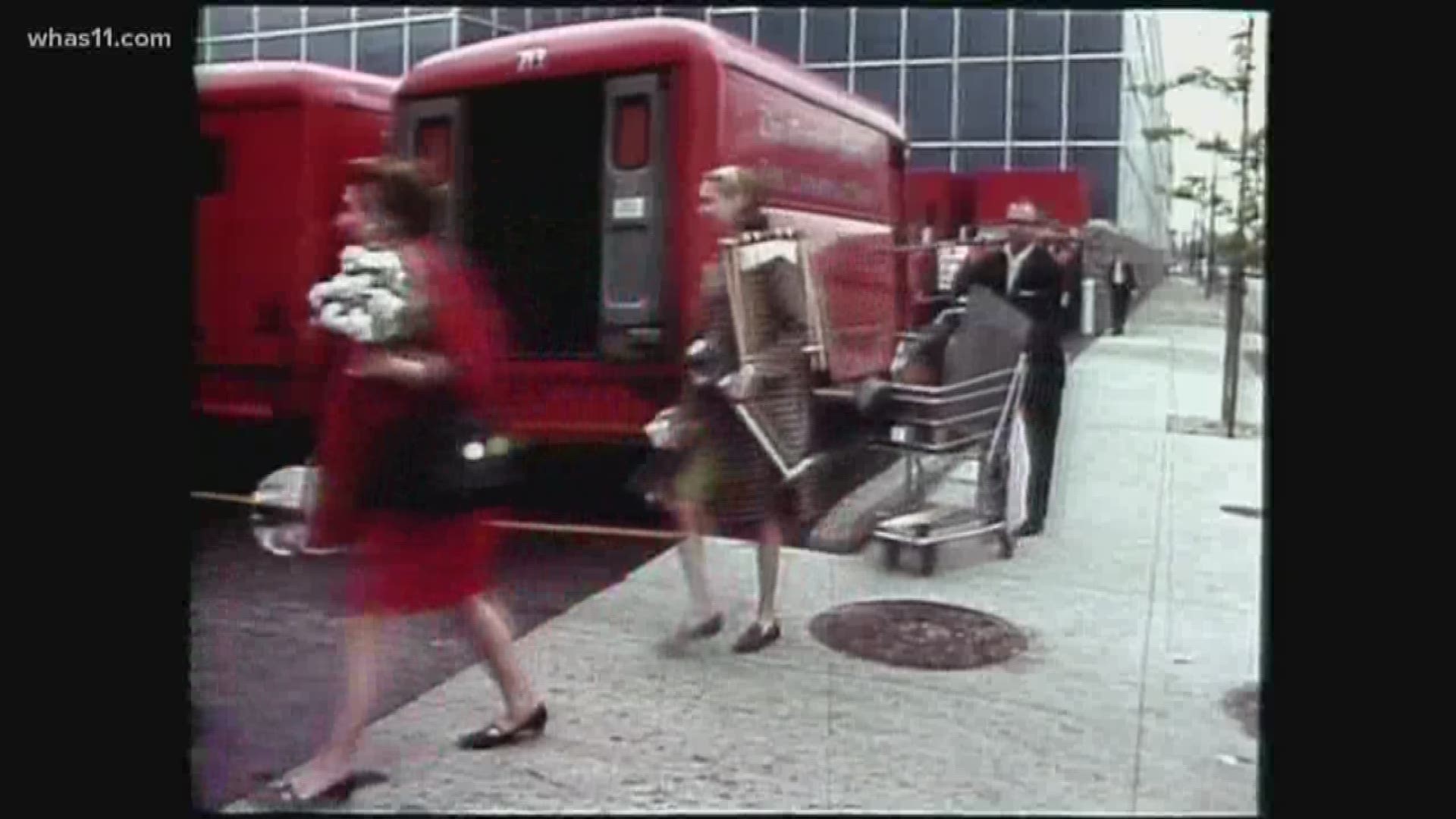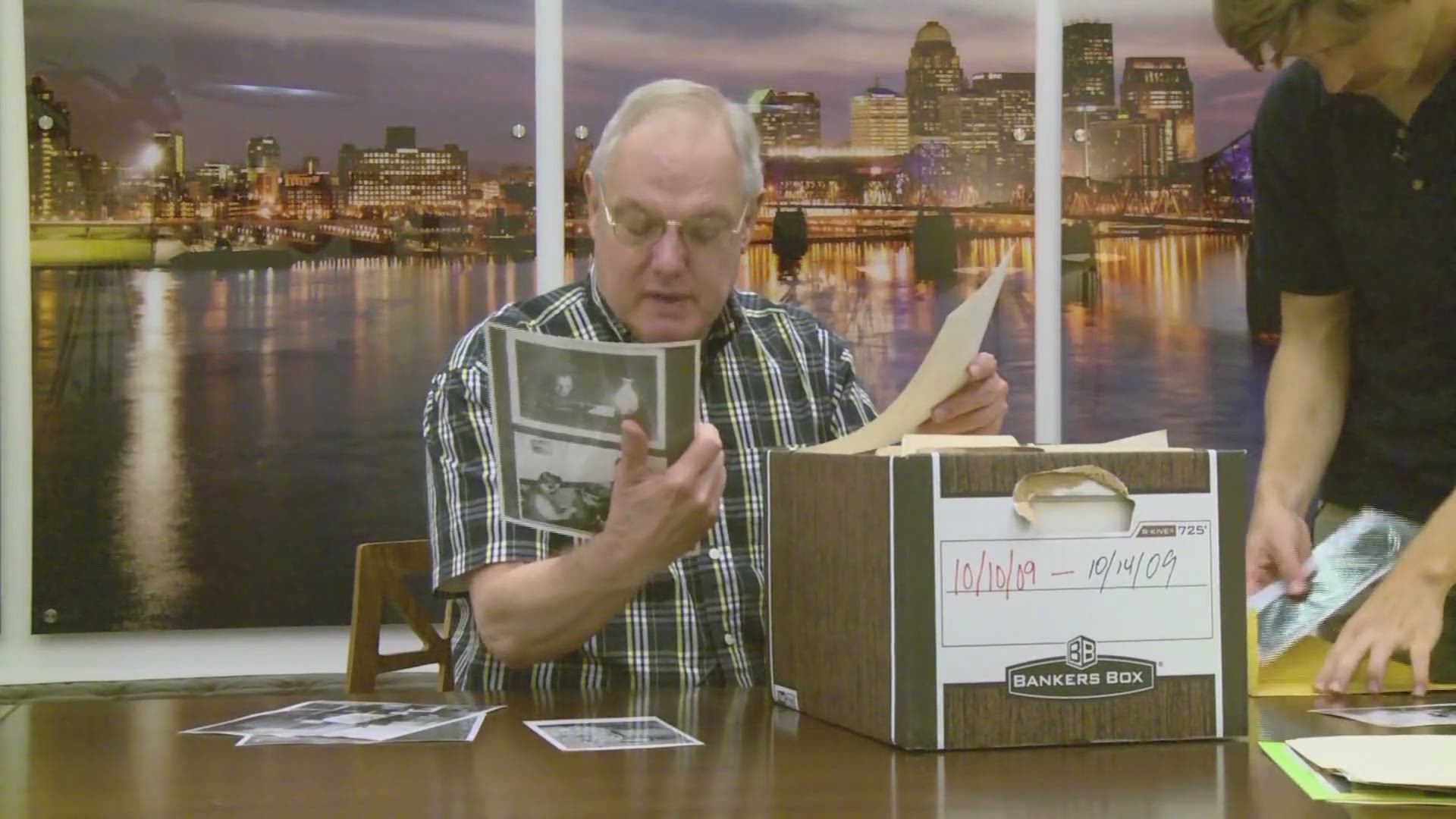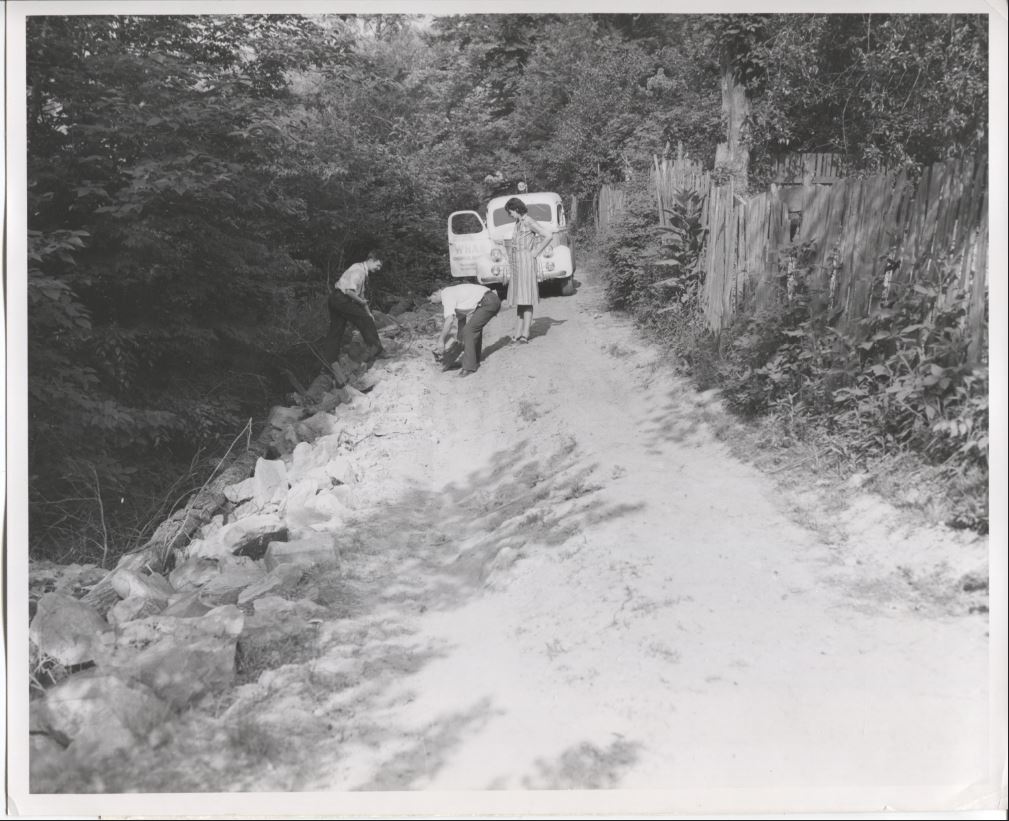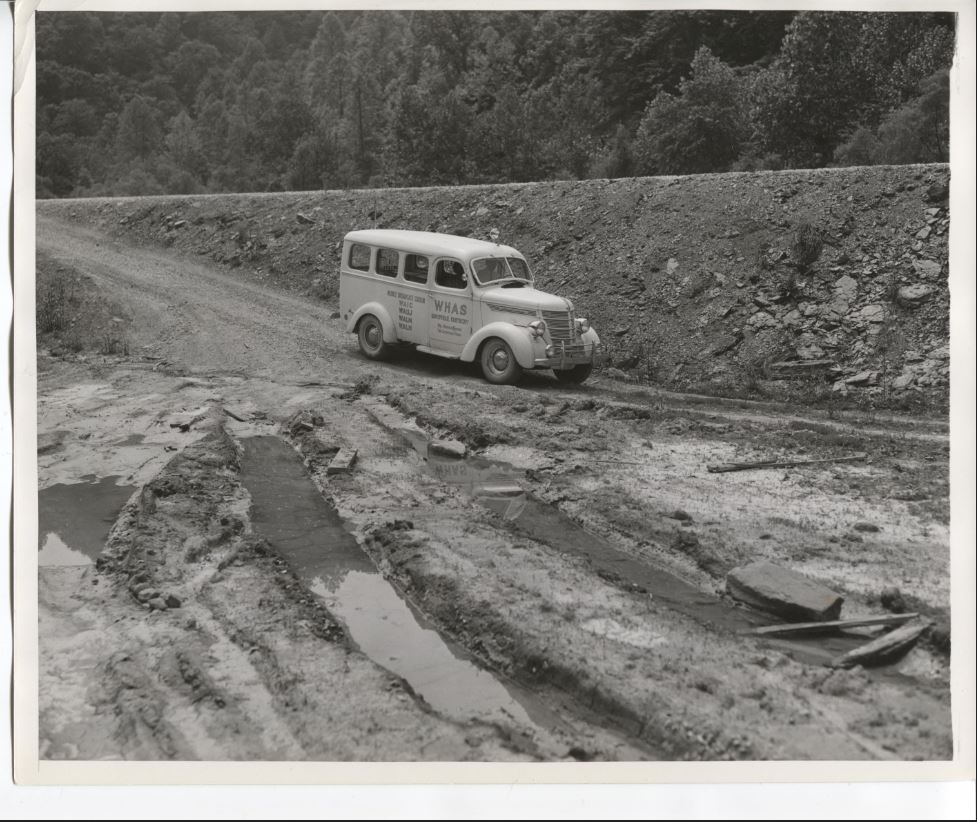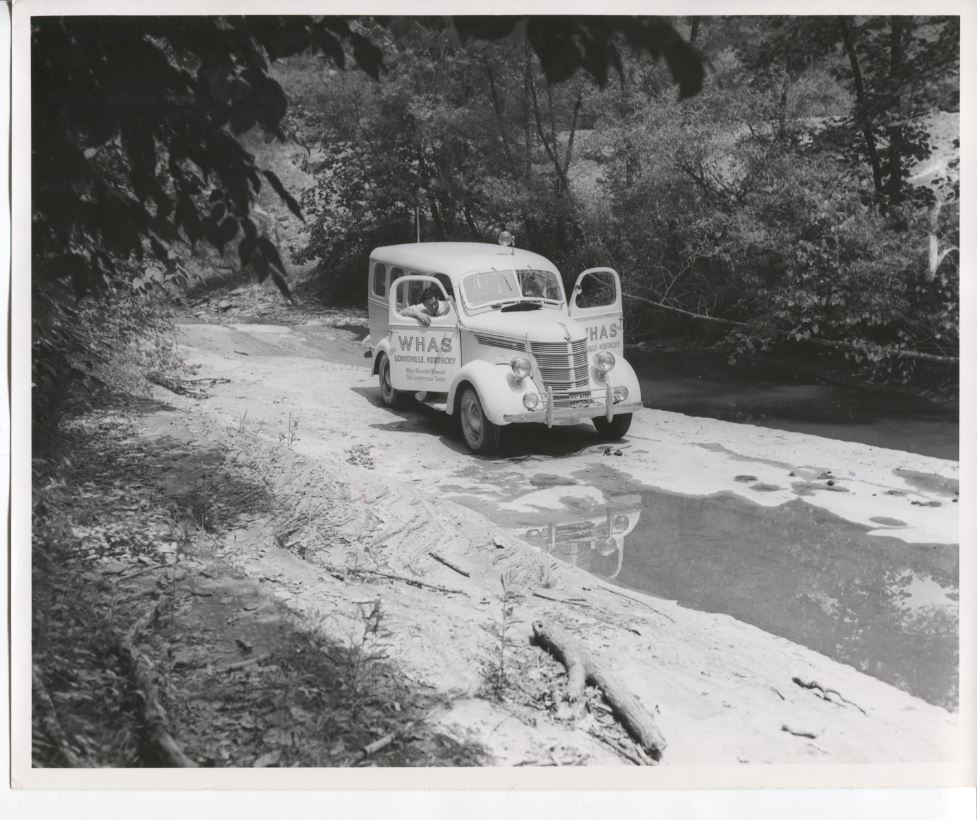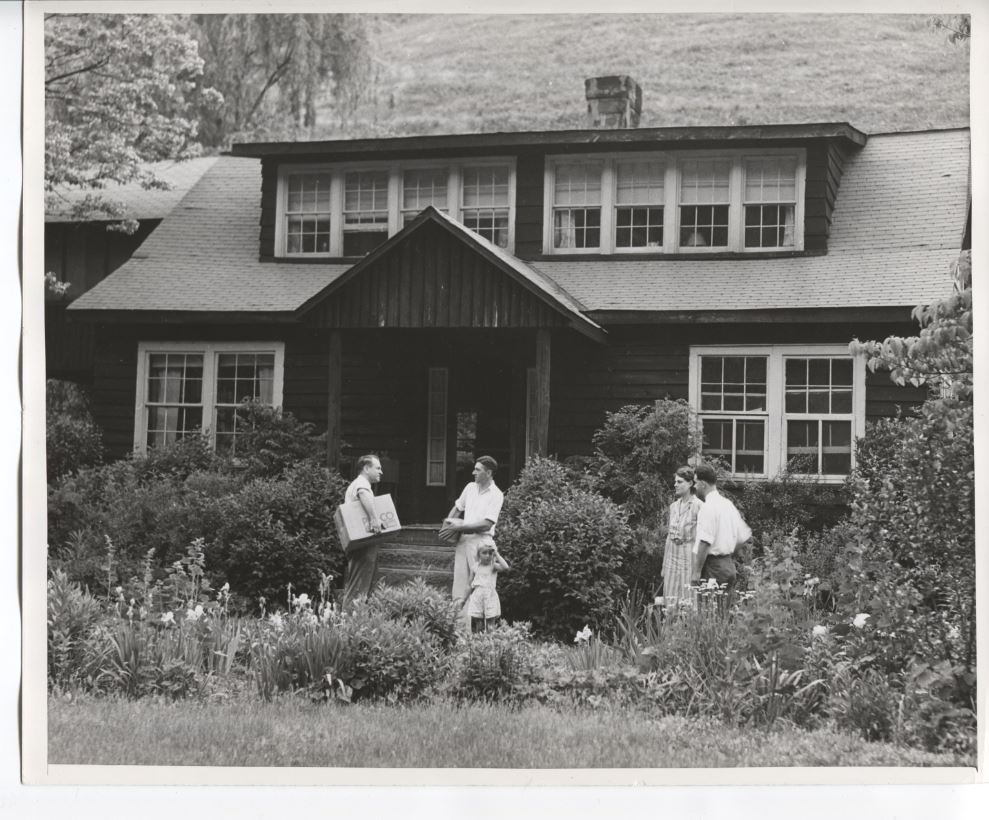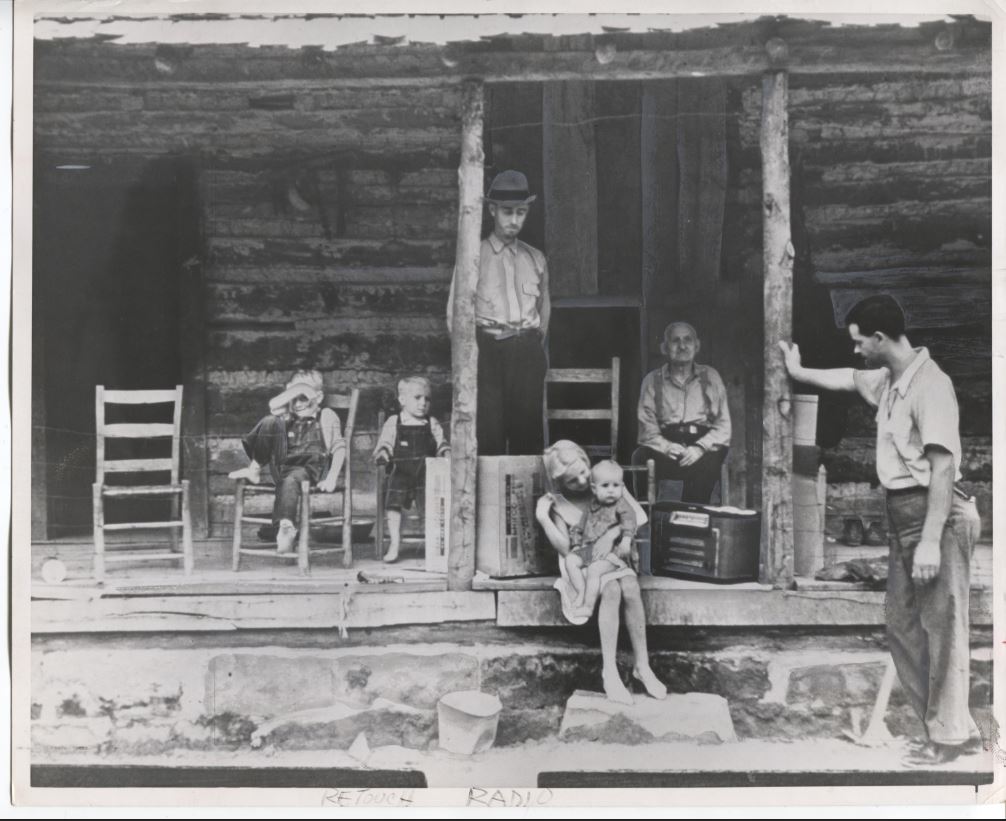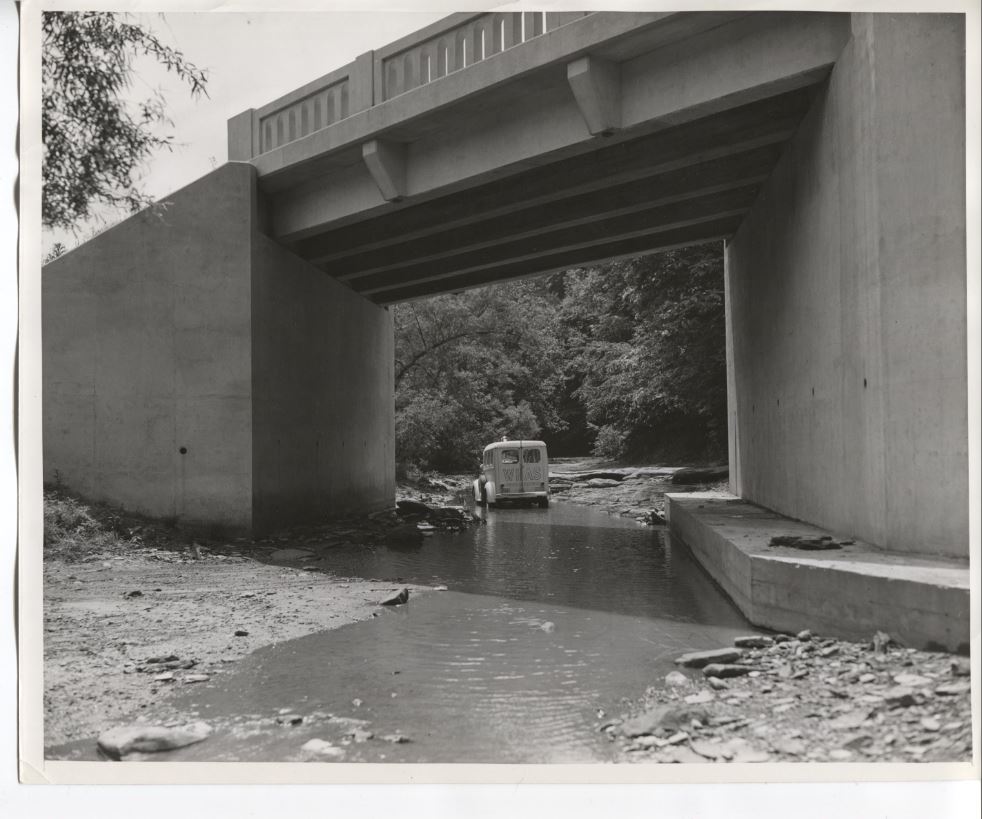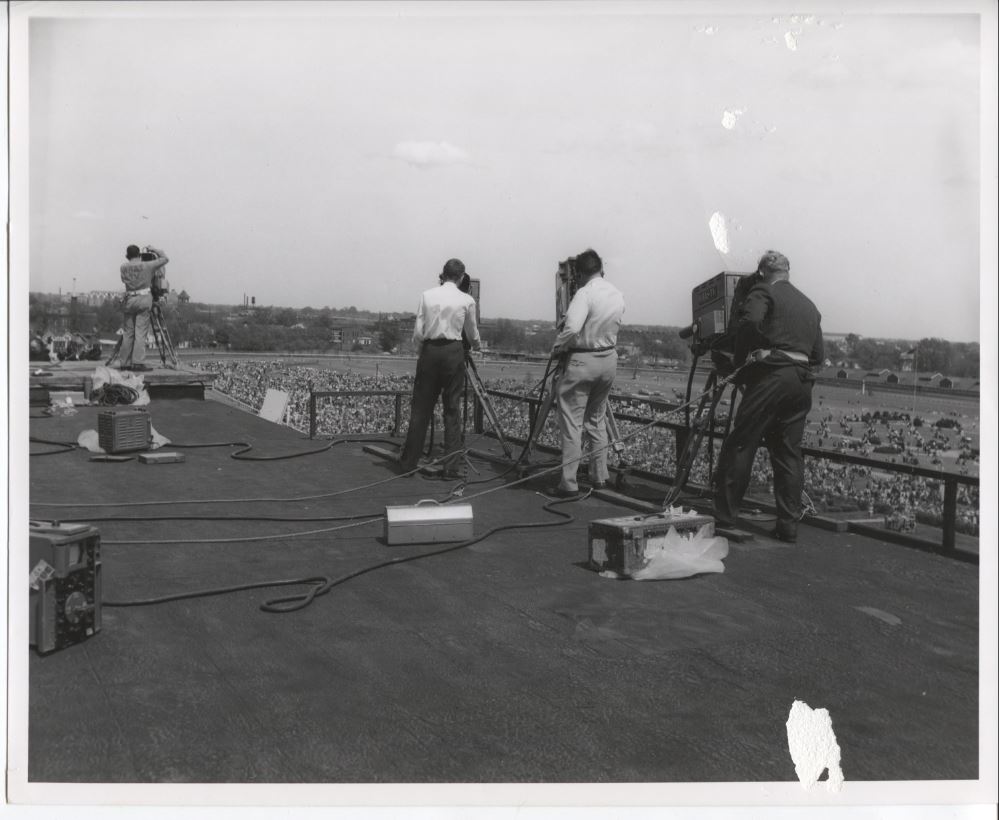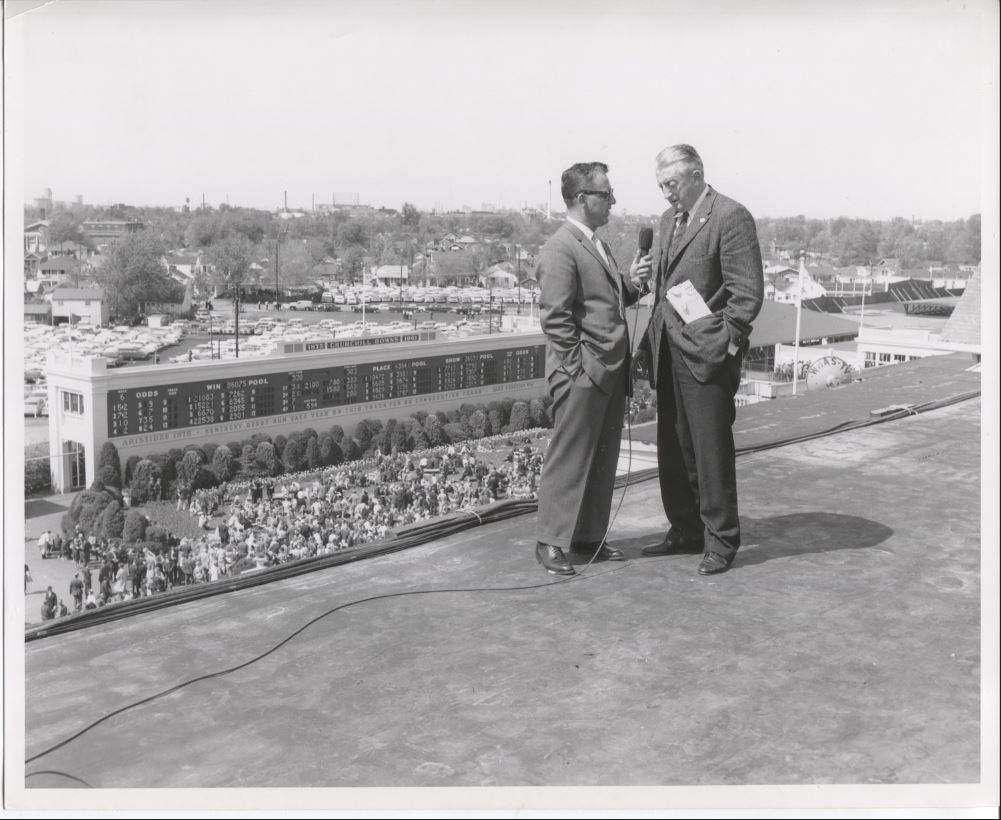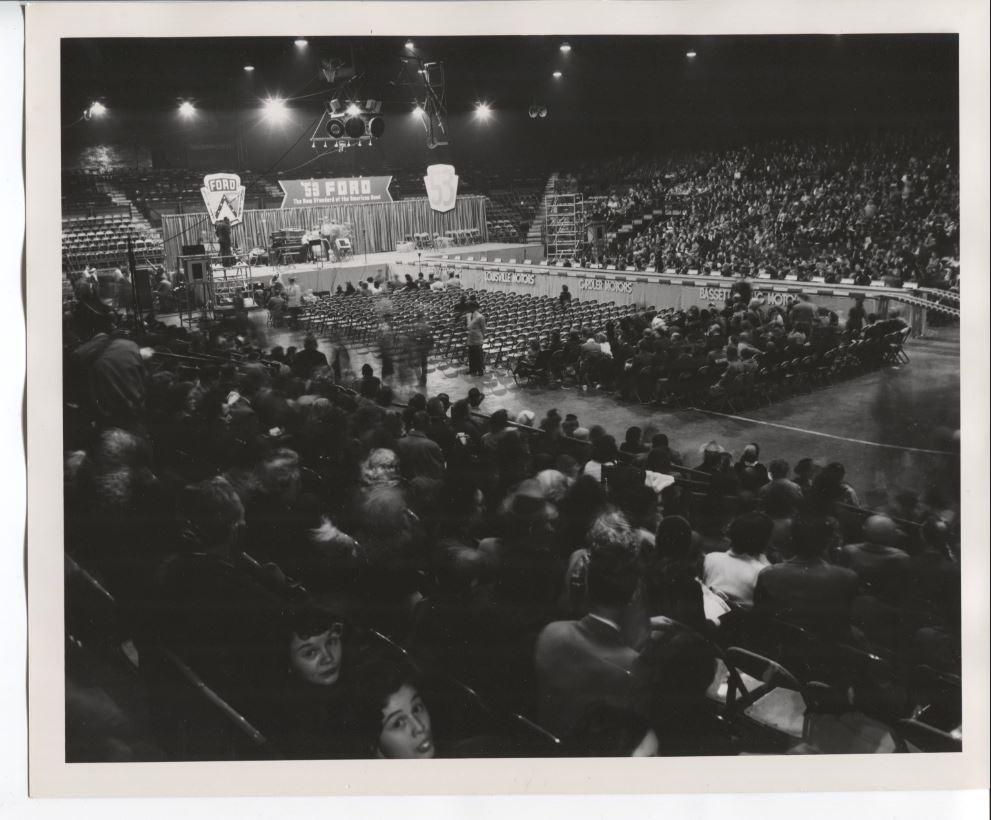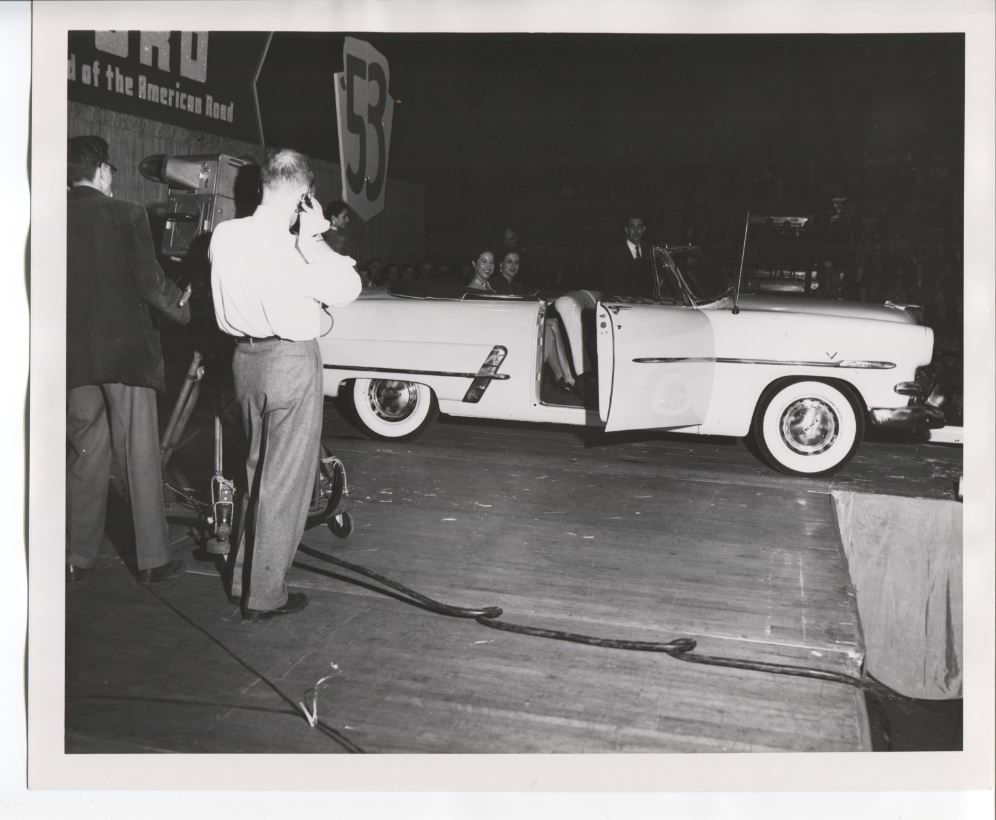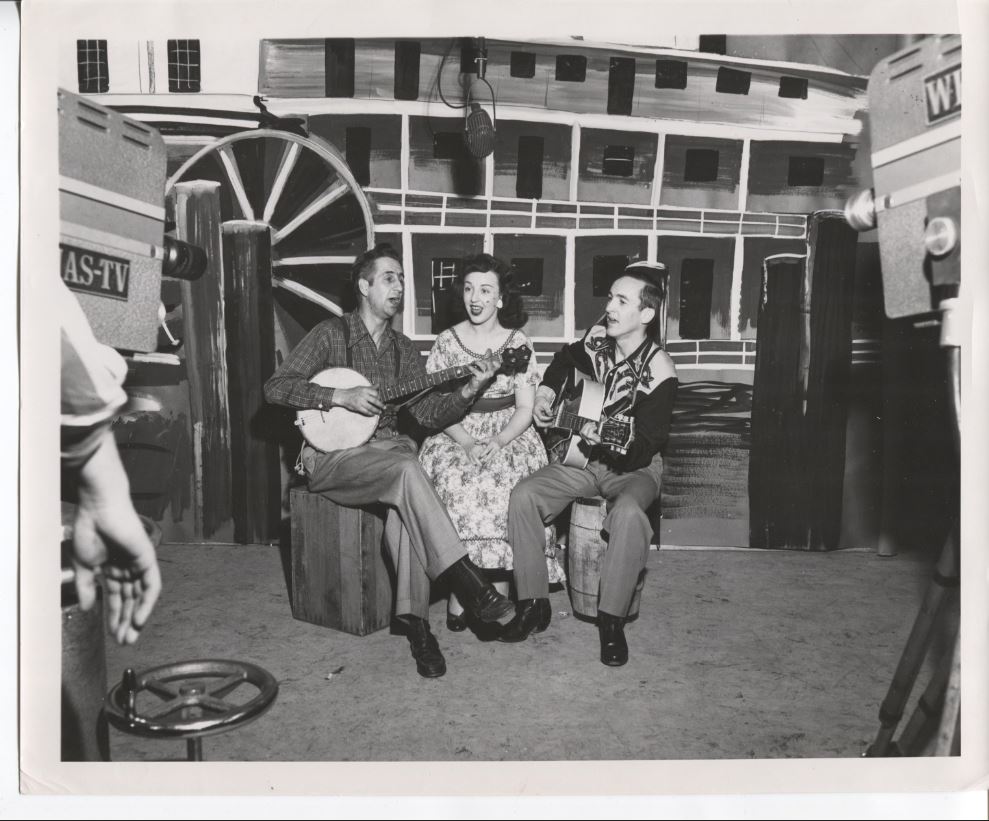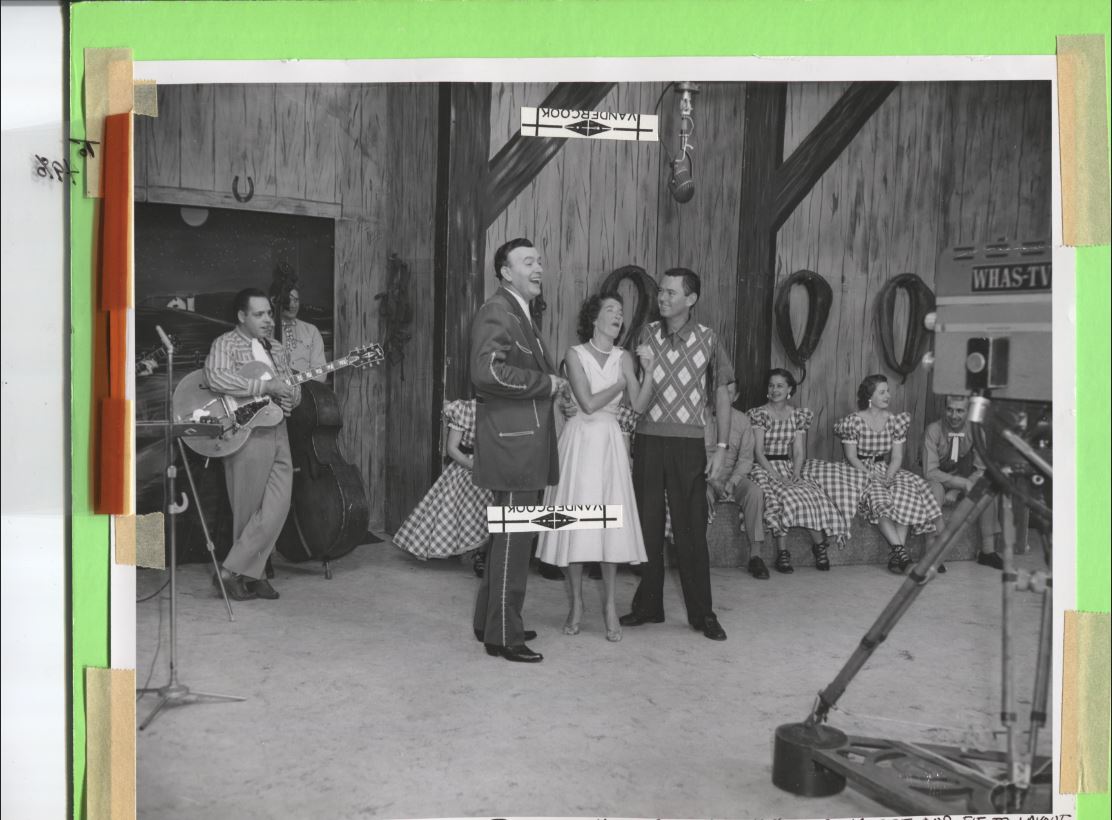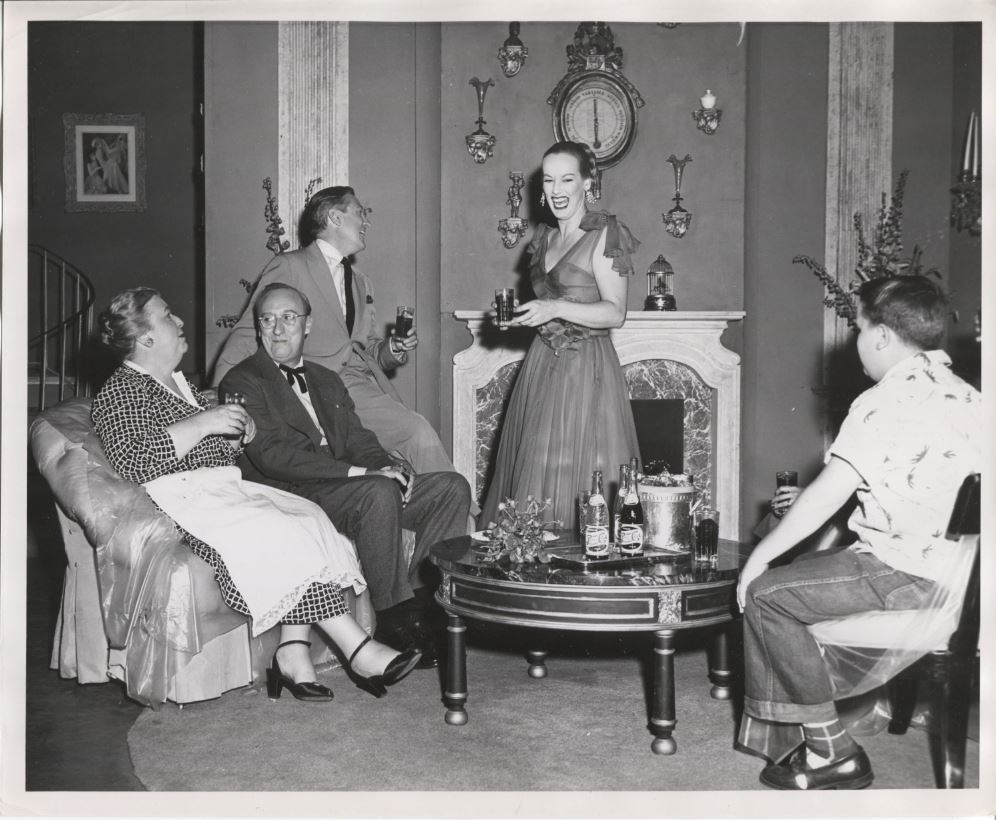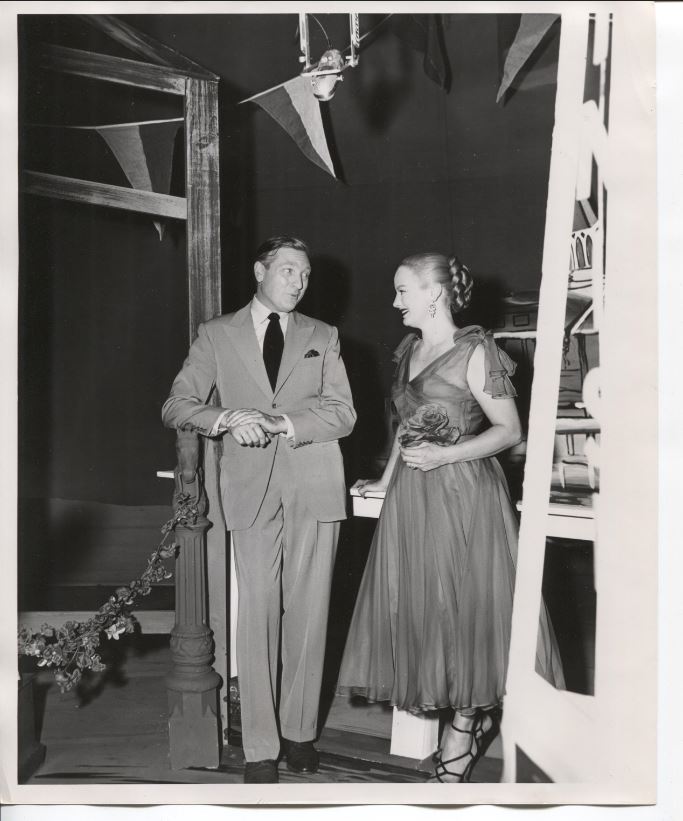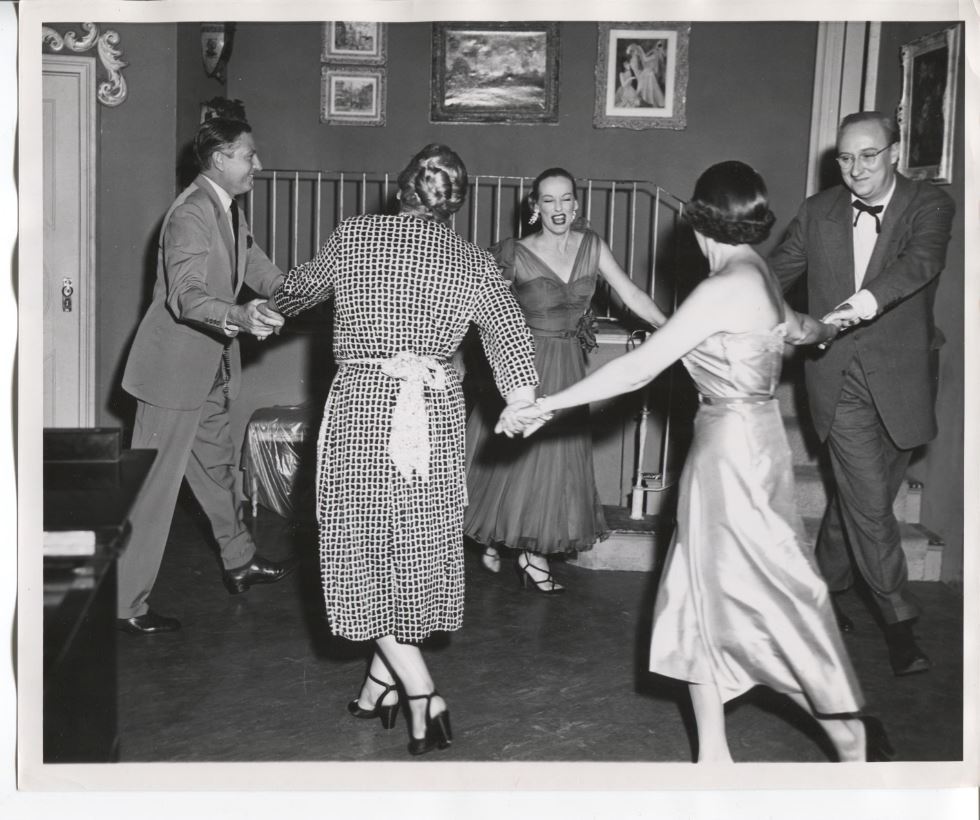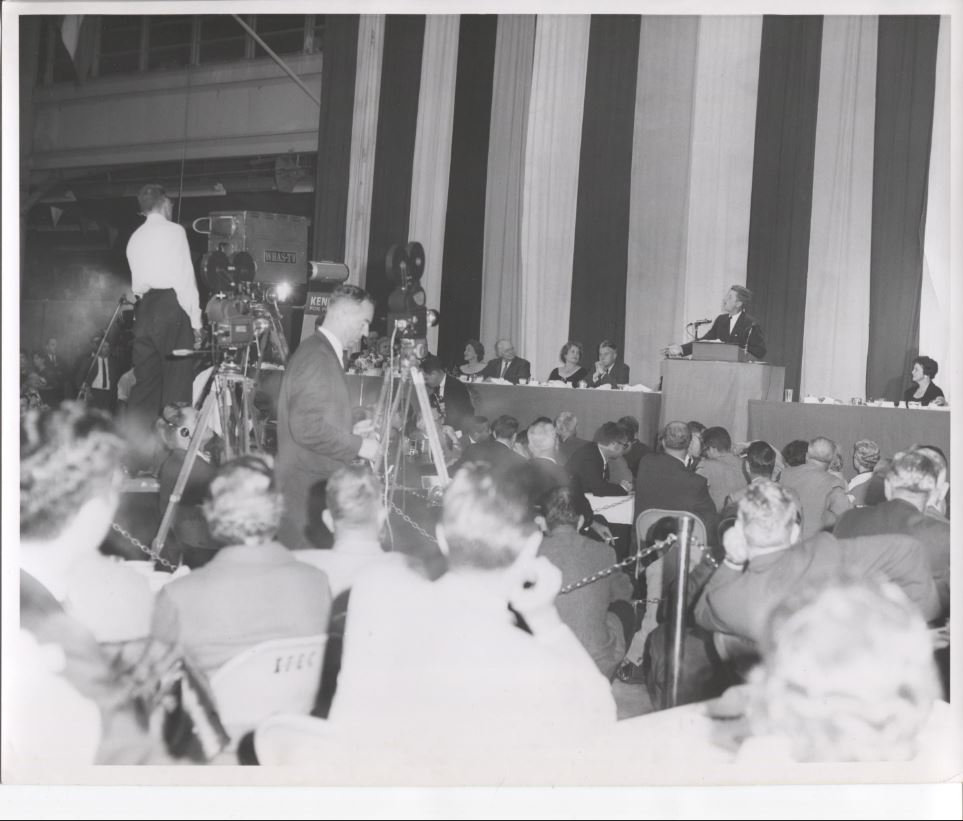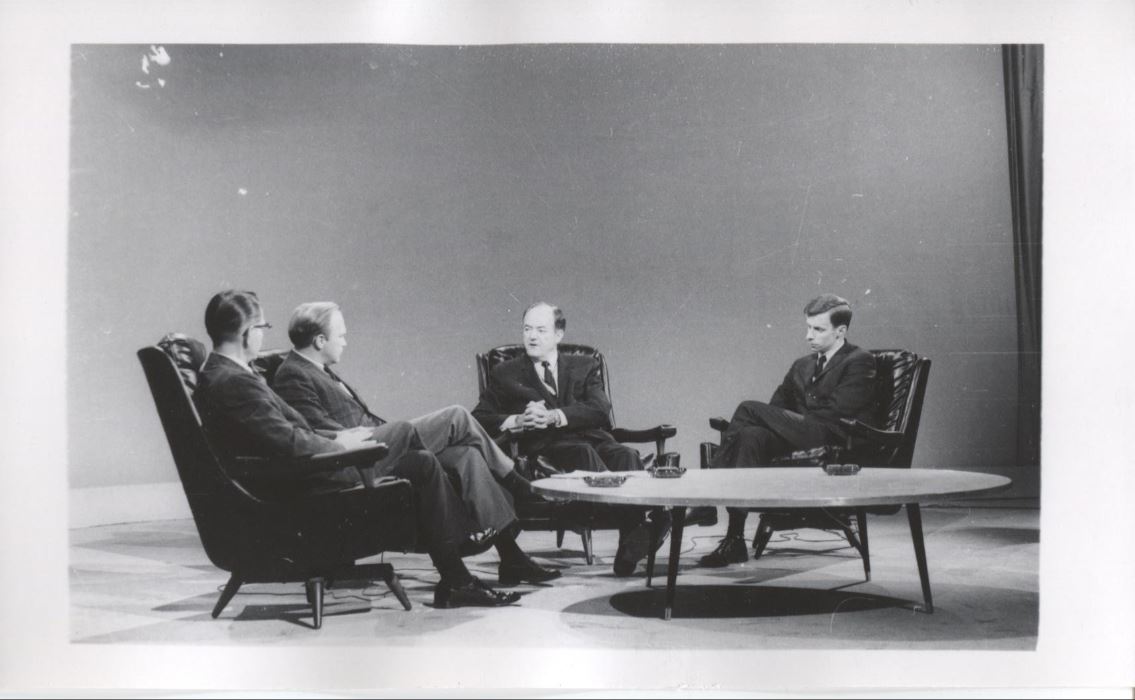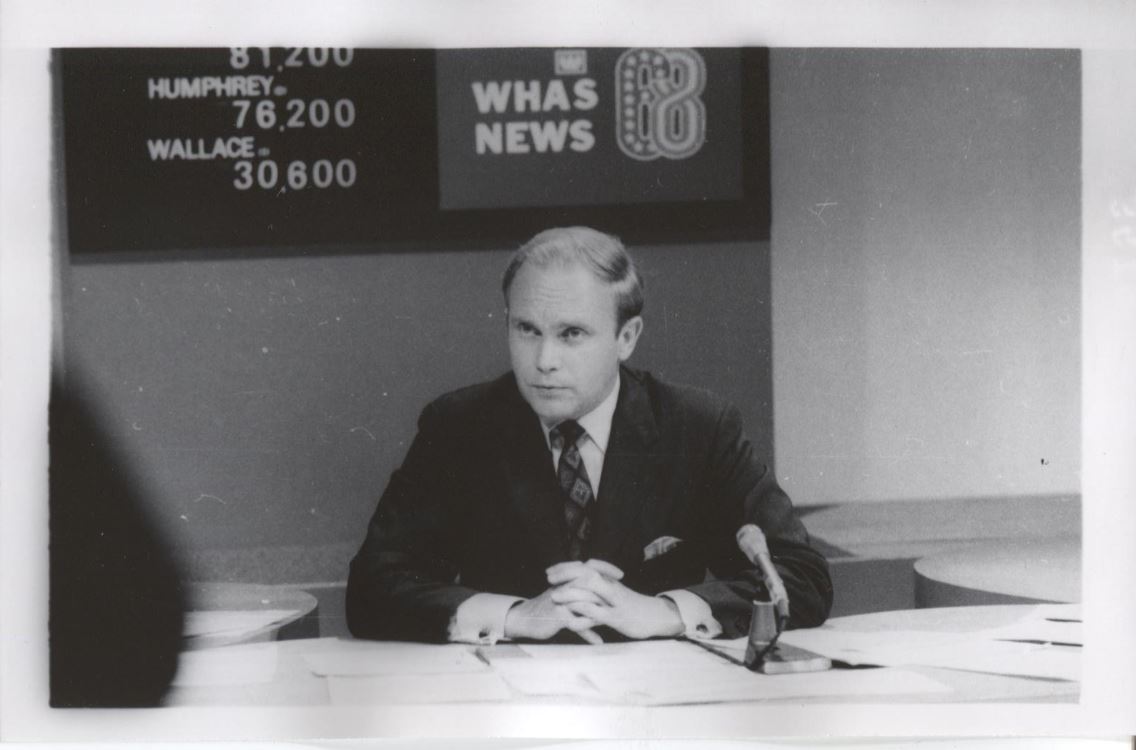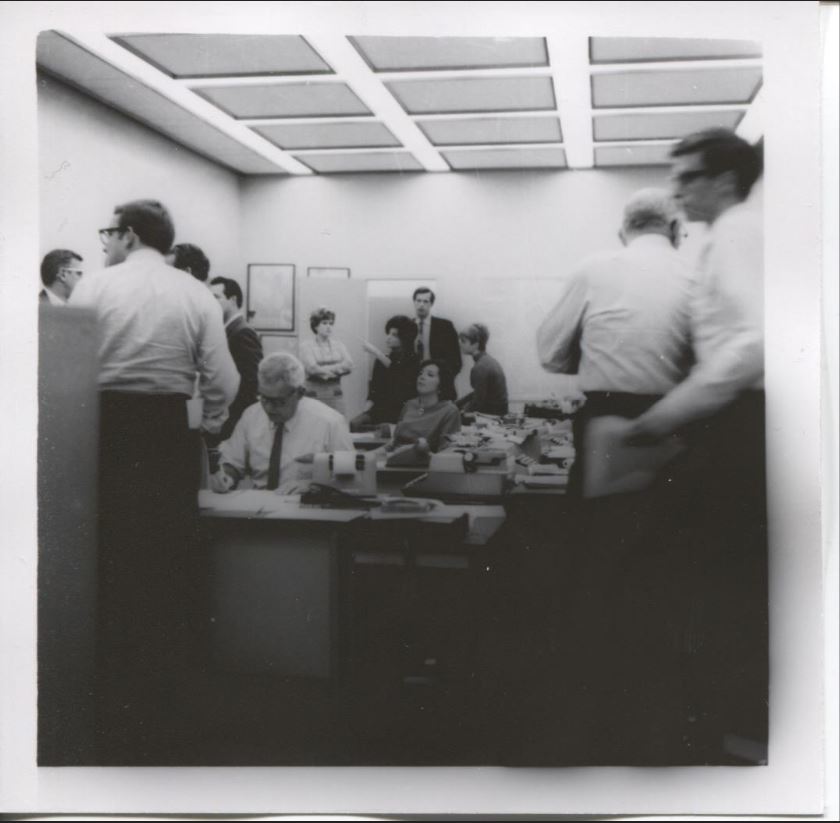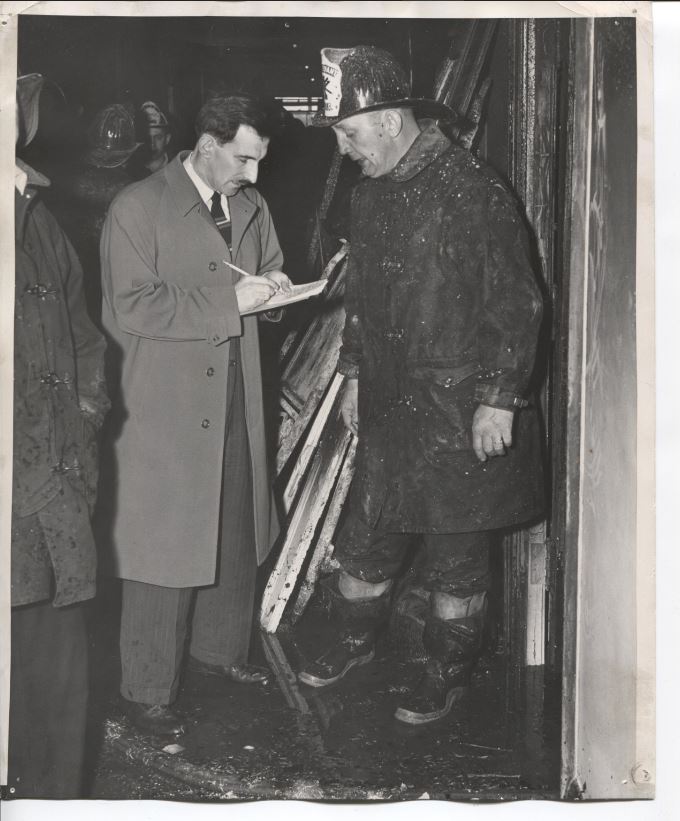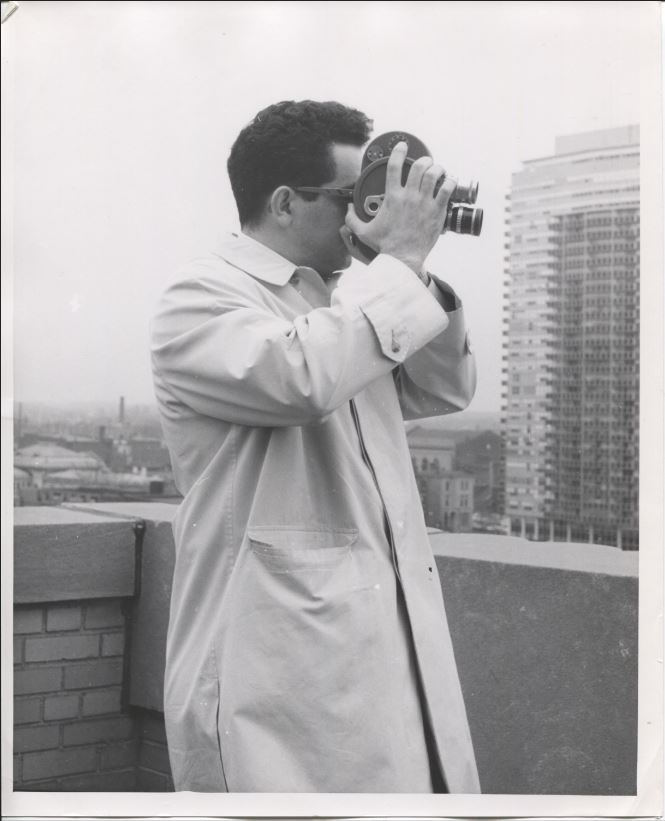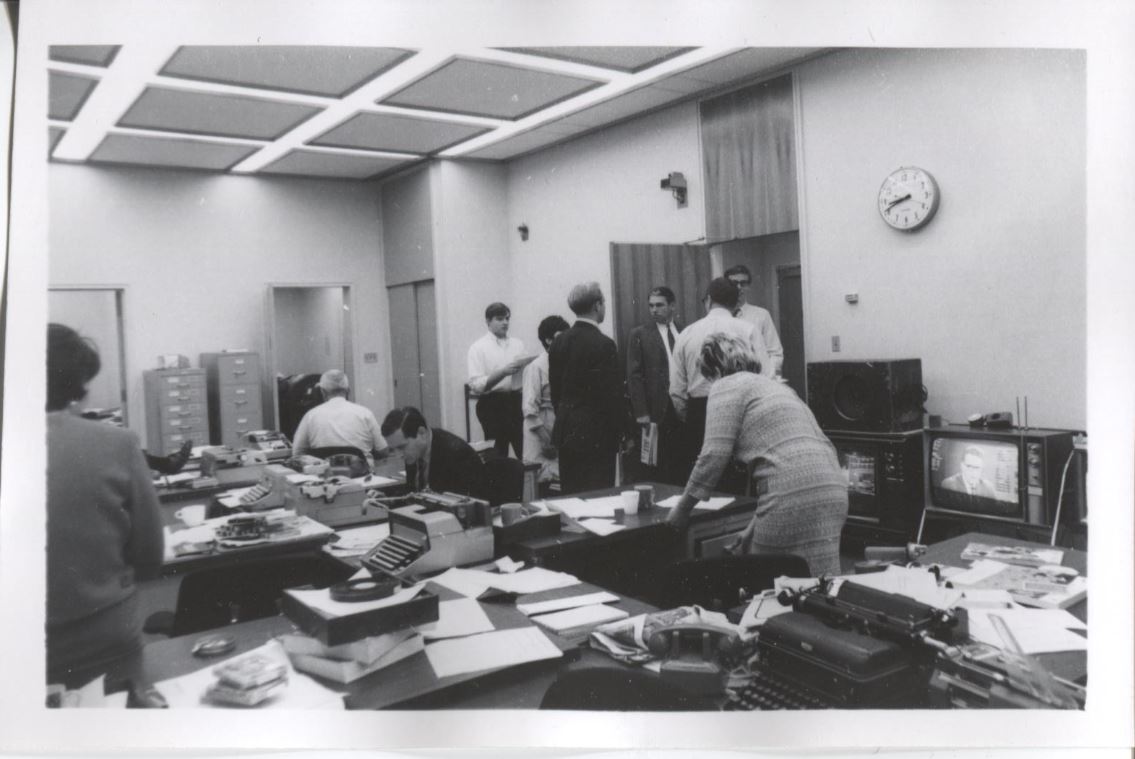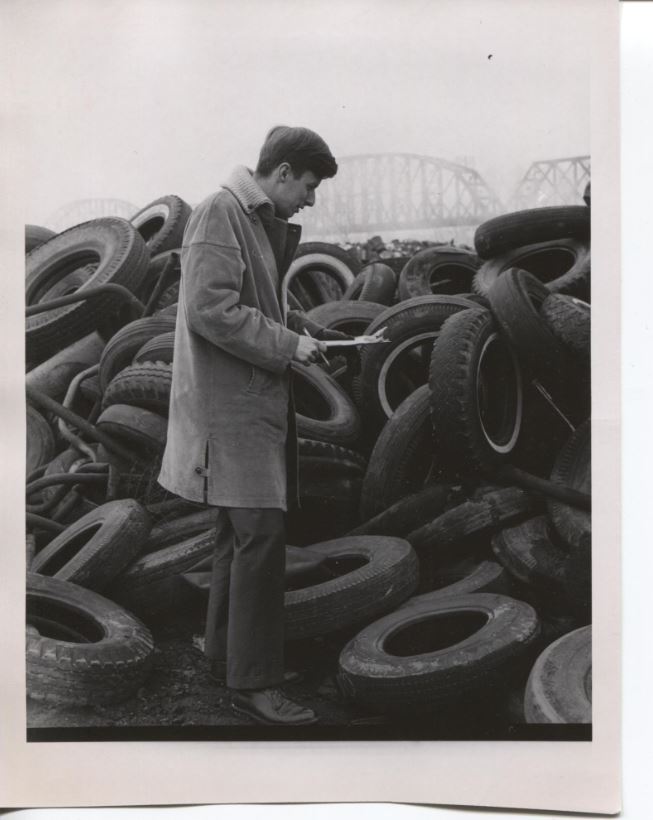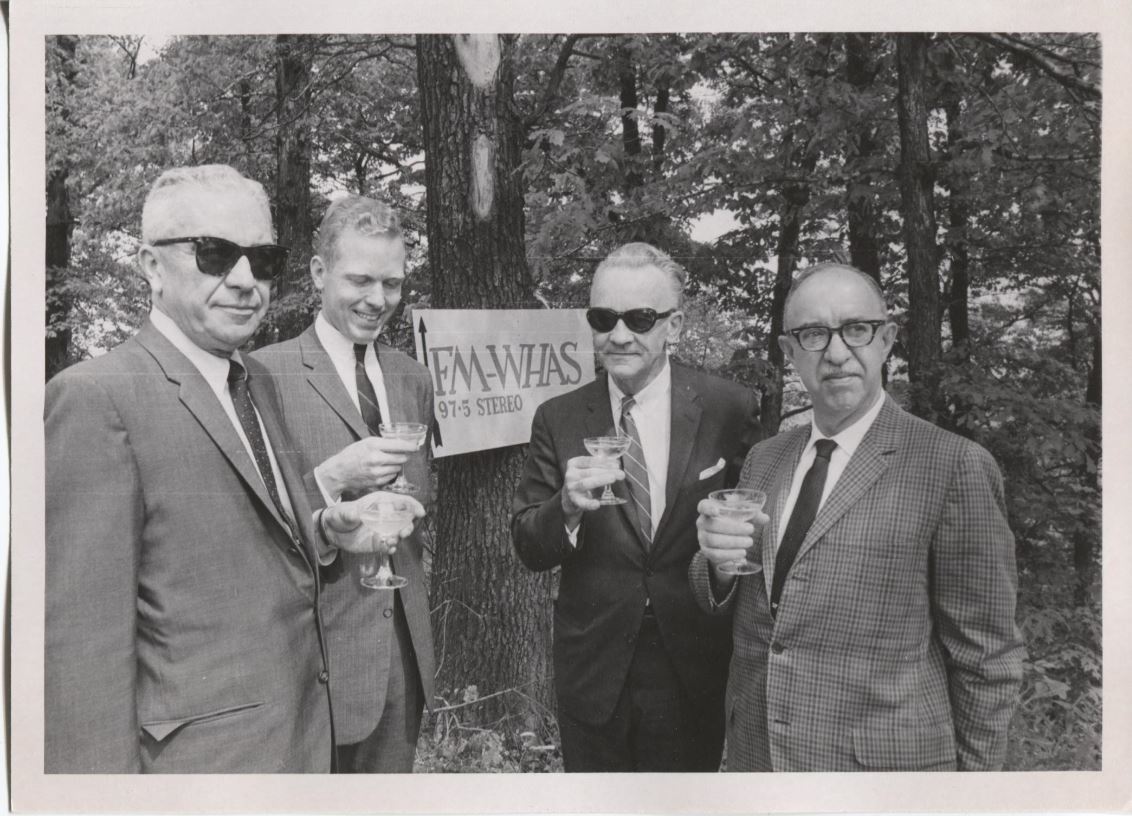LOUISVILLE, Ky. (WHAS11) – In May of 2018, as WHAS11 was celebrating the 50th anniversary of moving into its current location at 6th and Chestnut, WHAS employees got hold of a box of archival photos from the Courier-Journal building, our previous location.
WATCH: WHAS building opened 50 years ago
The box represented no particular theme. Photos were loosely organized and captured people and events spanning decades, from WHAS’s earliest incarnation as a radio station in the 1920s to the advent of WHAS-TV in the 1950s and beyond.
The photos show a media organization in a constant state of change: pioneering new frontiers, growing and expanding into new mediums and a new home, and serving the community through news, advocacy and entertainment.
Former WHAS-TV employee Jerry Rice joined us to comb through the newfound photos and fill in the gaps with first-hand knowledge of the people and events contained within. Rice worked for WHAS-TV as a film editor from 1963 to 1969 and again as a television promotion coordinator from 1980 to 1982.
Early Days
In 1922 the Bingham family, publishers of the Louisville Courier-Journal and Louisville Times, launched a radio station with the call letters WHAS. In 1925 WHAS broke new ground by conducting the first live broadcast of the Kentucky Derby, a race won by Flying Ebony in a downpour.
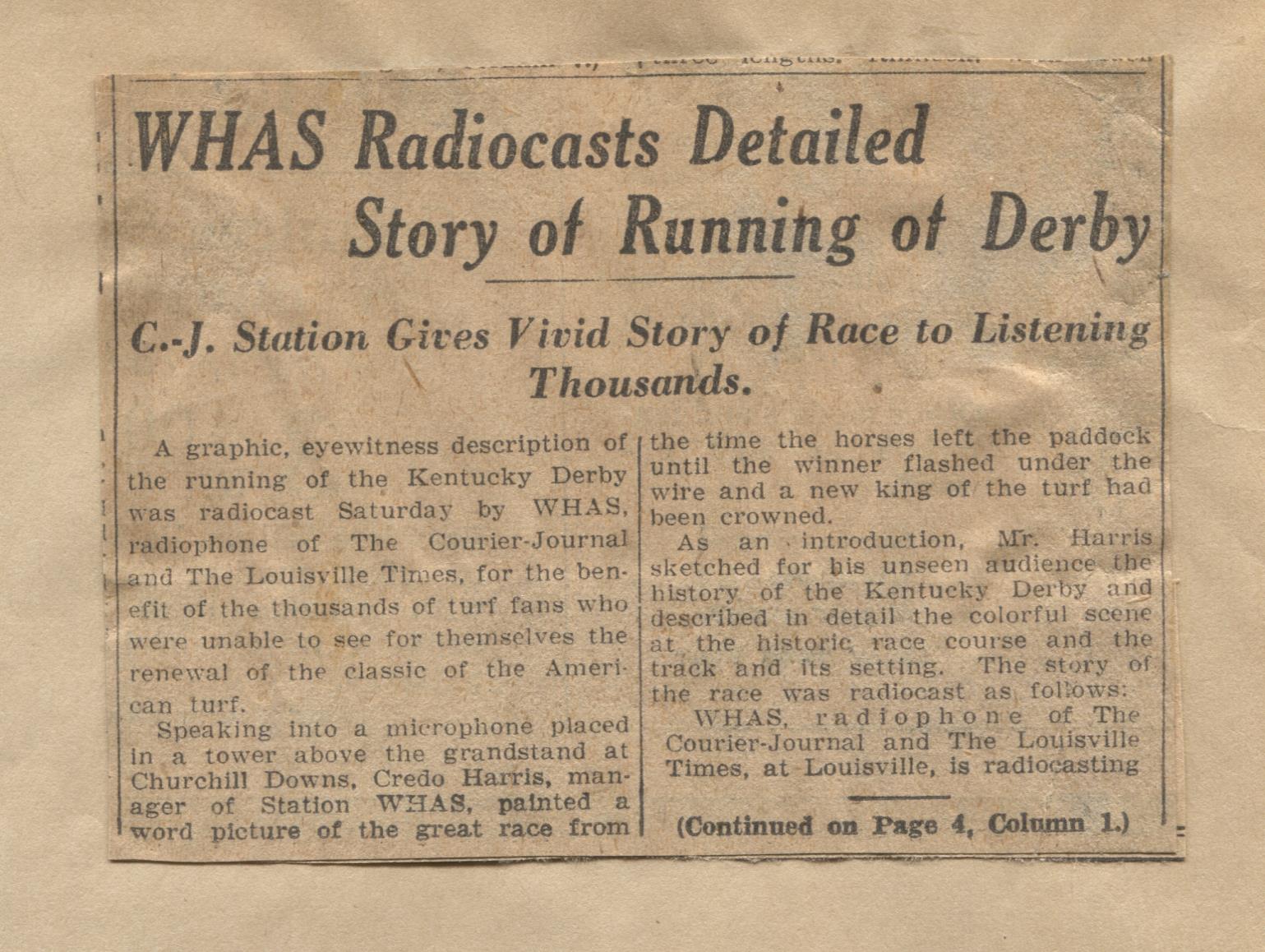
Twelve years later the city was ravaged by the Great Flood of 1937, and WHAS was there to lend a hand. As flood waters took over the city, WHAS abandoned their programming and broadcast emergency announcements for nearly 200 straight hours, relaying calls for help over the airwaves. The “Send A Boat” campaign was praised nationwide as a triumph in public service and served as a model for future disaster coverage.
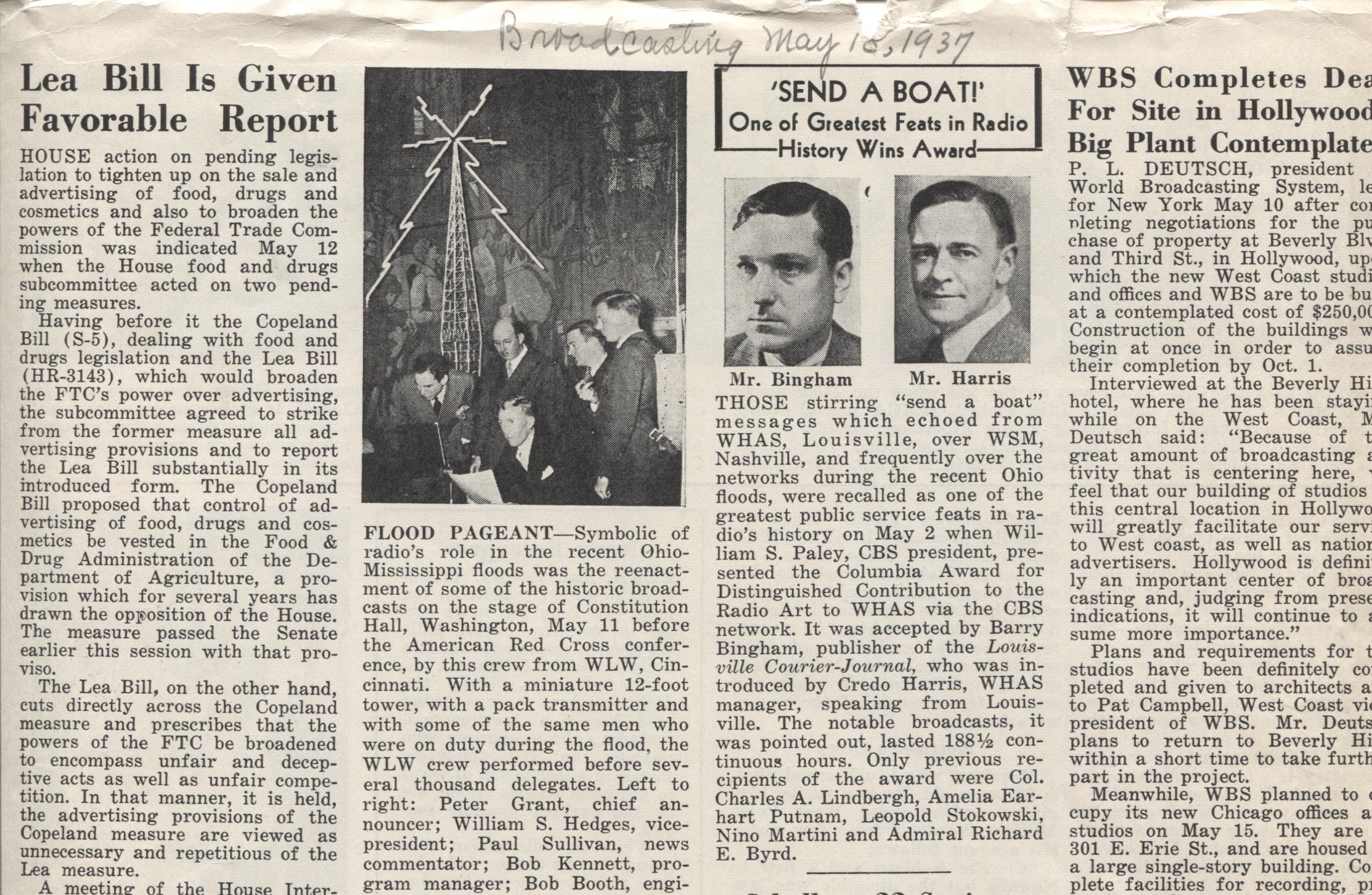
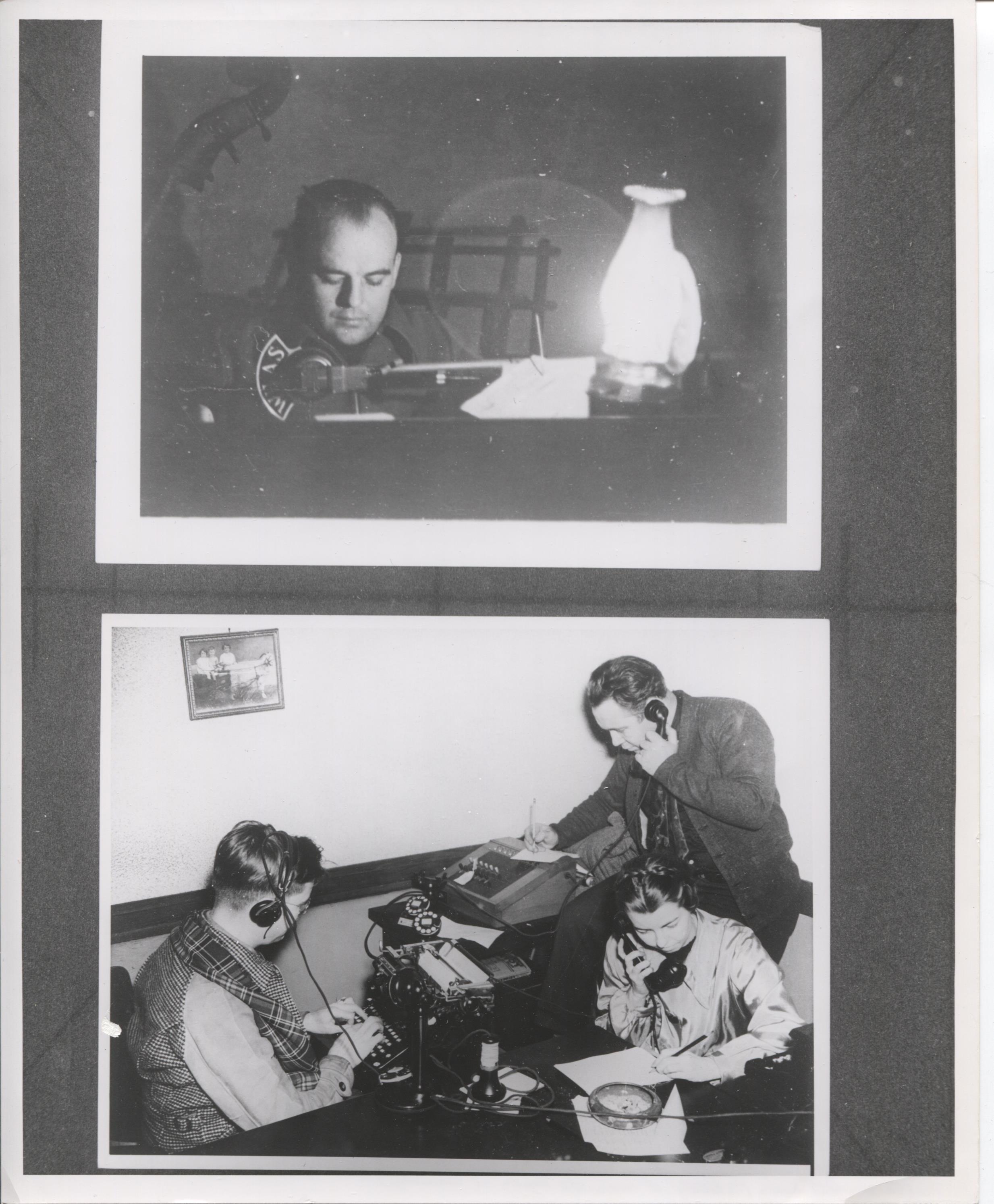
Top: WHAS announcer Pete Monroe reading 1937 flood bulletins. Bottom: Receiving emergency messages during the '37 flood. Clockwise from left: Louis McNeely of the Louisville Times, WHAS control engineer Karl Schmidt, WHAS stenographer Alice Arnold.
One of the men involved in the “Send A Boat” campaign was Karl Schmidt, an engineer who had fled Nazi Germany in the 1930s and spent more than 30 years with WHAS.
WATCH: Jerry Rice remembers WHAS's Karl Schmidt
In 1941 WHAS was made a clear channel station, which broadened its reach and shifted it to an AM frequency. Following this move, WHAS partnered with the University of Kentucky to establish rural “listening posts” throughout eastern Kentucky. The “listening posts” would help connect the isolated populations of rural Kentucky with the rest of the world, democratizing access to information across the state. As seen in these pictures, the road was not always an easy one.

A promotional memo describes the rural listening post campaign, as well as the below picture.
WHAS Engineer D.C. Summerford (left), Director of Engineering Orrin W. Towner and Mrs. Towner clear rocks from the road during a rural listening post expedition.
WHAS Director of Engineering Orrin Towner navigates a wet road on a rural listening post expedition.
WHAS-TV Launches onto the Airwaves
In 1950 the Bingham family media empire expanded into the medium of television in the form of WHAS-TV. On March 27, 1950, our first broadcast went on the air from our original home on the top floors of the Courier-Journal building on 6th and Broadway.
The new television station didn’t waste time when it came to upholding the pioneering tradition of WHAS. On May 2, 1953, just as the radio station had done 28 years prior, WHAS-TV broadcast the Kentucky Derby live coast-to-coast for the first time.

WHAS cameras on the roof of the Churchill Downs grandstand.
An interview conducted overlooking the paddock during the 1961 Kentucky Derby.
The view from the Churchill Downs grandstand in an undated photo.
The first decade of WHAS-TV saw a flourishing of creative pursuits as the Bingham family and WHAS tested the waters of the new medium with remote broadcasts and original shows.
A WHAS remote broadcast of the 1953 Ford model year debut event at the Louisville Gardens.
A WHAS camera gets a closer look at a '53 Ford.
The show Hayloft Hoedown became a staple on the channel from 1951 to 1969.
Filming an episode of Hayloft Hoedown, ca. 1950s.
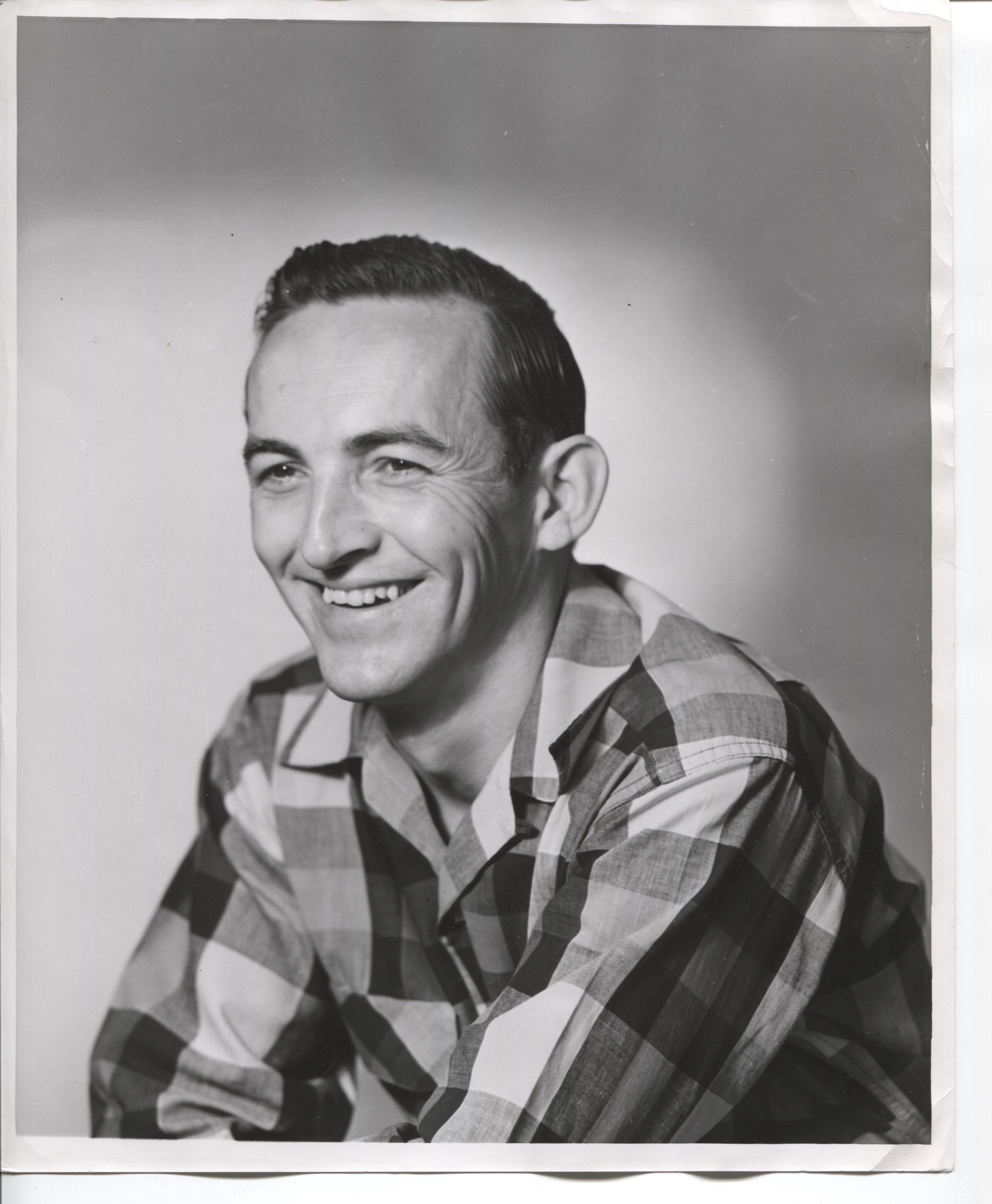
Shorty Chesser, a personality on Hayloft Hoedown for many years.
Filming of Hayloft Hoedown in an undated photograph. The photo has been marked for cropping for promotional purposes.
WATCH: Jerry Rice discusses working on Hayloft Hoedown
And in 1951 Hollywood actress and “First Lady of Television” Faye Emerson brought her show Wonderful Town to Louisville. The CBS network show was designed to highlight towns across America and in July of 1951 Louisville got its turn. Emerson hosted Barry Bingham, Sr., Louisville Mayor Charles Farnsley, actress Jane Darwell—known for her Academy Award-winning supporting role alongside Henry Fonda in 1940’s The Grapes of Wrath—and singer Rosalind Marquis.
Filming the Louisville episode of "Wonderful Town" in July, 1951. From left to right: Jane Darwell, Louisville Mayor Charles Farnsley, Barry Bingham and Faye Emerson.
Barry Bingham and Faye Emerson during the filming of "Wonderful Town" in July, 1951.
From left to right: Barry Bingham, Jane Darwell (back to camera), Faye Emerson, Rosalind Marquis (back to camera) and Louisville Mayor Charles Farnsley dance during the filming of "Wonderful Town" in July, 1951.
While shows like this kept viewers entertained, WHAS-TV’s news coverage kept viewers informed. WHAS-TV was there when then-Senator John F. Kennedy came to Louisville during the 1960 presidential election cycle. On October 5, 1960, Kennedy made remarks at Jefferson Square Park in downtown Louisville and again at the fairgrounds, where WHAS-TV cameras captured him on film.
Then-Senator John F. Kennedy delivers a speech at the fairgrounds during the 1960 presidential election cycle. A WHAS-TV camera is visible in the top left. October 5, 1960.
During the 1968 election cycle, then-Vice President Hubert Humphrey stopped by 6th and Chestnut to discuss his candidacy for the White House with WHAS farm director Barney Arnold, anchor Fred Wiche and political reporter Bob Johnson.
Vice President Hubert Humphrey visits WHAS while running for president in the 1968 election. From left to right: Barney Arnold, Fred Wiche, Humphrey, Bob Johnson. December 8, 1967.
On election night, Fred Wiche delivered the news Humphrey didn’t want to hear: former Vice President Richard Nixon had claimed the White House on his second attempt.
Fred Wiche delivers election results during the 1968 presidential election. November 5, 1968.
The WHAS newsroom on election night.
Throughout it all, WHAS reported on the daily events of Louisville and Kentuckiana. The equipment was different then—reporters shot footage on film cameras and copy was written on typewriters—but the job was the same.
WHAS's Jean Clos reporting on the Kentucky Hotel fire. December 22, 1946.
Gathering film for a WHAS newscast.
The WHAS newsroom, circa 1968.
Bob Johnson reporting on solid waste in Kentucky for the 1967 documentary "Where Does It Go From Here?" The Big Four Bridge is visible in the background.
Looking back on these images from the digital world of 2018, it’s hard to imagine how they got it all done, and thinking about how the media landscape has changed over the past century can make your head spin. Luckily pictures like this, rediscovered after 50 years, bring us back in touch with the people who carried the torch along the way.
Cheers to that.



